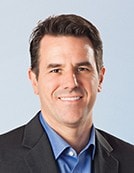Focus on economy and farm management
By Diego Flammini, Farms.com
More than 100 farmers and other agriculture professionals filled the Bingemans Conference Centre in Kitchener, Ontario on Monday to take in the Ag Outlook 2015, hosted by Farm Credit Canada.
The show featured four predominant topics that are important for farmers to understand so they can prepare themselves not only for the upcoming planting season but also to be able to have an idea of what the future holds.
The first part of the coverage touched on agricultural markets and weather. Part II will feature the economy and farm management.
J.P. Gervais, Chief Agricultural Economist with Farm Credit Canada handled the presentation about the economy.
He talked about a “think global, act local” approach.
Thinking globally means understanding “not knowing exactly where the future will be, but certainly understand(ing) what are the drivers out there,” Gervais said. “Act local are the decisions you make within your business.”
One topic Gervais honed in on was the Canadian dollar, calling it the “wild card” when trying to evaluate projections. He estimates the loonie will be around the 80¢ mark for 2015 and that the lower dollar isn’t necessarily a bad thing for the ag industry when compared to the entire economy.
“The economy is not going to do well for the foreseeable future whether it’s 12 months or 18 months,” Gervais said. “Whereas if you look at the forecasts for crop receipts and livestock receipts, the sky is not falling for sure.”
“Demand for ag commodities is still strong and the low dollar is supporting our industry while hurting other industries (oil, manufacturing). The outlook is fairly positive,” he explained.
Lyndon Carlson closed out the half-day conference with his presentation about farm management.
He said the most important plan for a farmer to have is a one-year plan.
“Start with a very well written plan about the immediate future. That’s the one that will make you the most money,” he said.
Carlson outlined three important days on the calendar for farmers to pay attention to – St. Patrick’s Day, Labour Day and New Year’s Day.
“I like to, where possible, price 25% of my crop before I plant it, another 25% before I harvest it and another 25% before the year ends,” Carlson said when describing a conversation he had with a producer.
One area he talked about was the growing global population and how the demand for food will grow. He pointed out China and India, both with populations surpassing 1 billion people.
Carlson summed up the populations of Canada, Russia, the US, Mexico and 16 other countries to equal 1 billion.
“That’s not a cycle, that’s a permanent change in how much food we’ll need to supply,” he said.
When it comes to transporting goods across the country, Carlson said the oil pipeline is a way to free up space on railroads and that farmers should support it.
“We should be doing all we can to promote the building of the proposed pipelines,” he said. “We’re moving way too much oil by rail and it’s clogging up our ability to move grain.”
Join the conversation and tell us if you write down yearly plans and pay attention to the economy and the dollar fluctuation.

J.P. Gervais

Lyndon Carlson